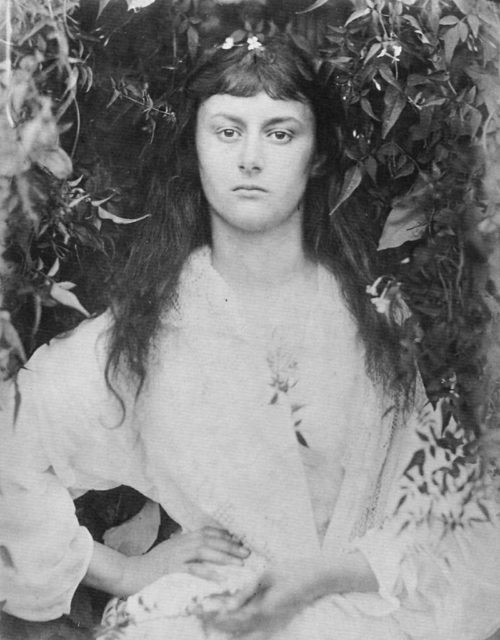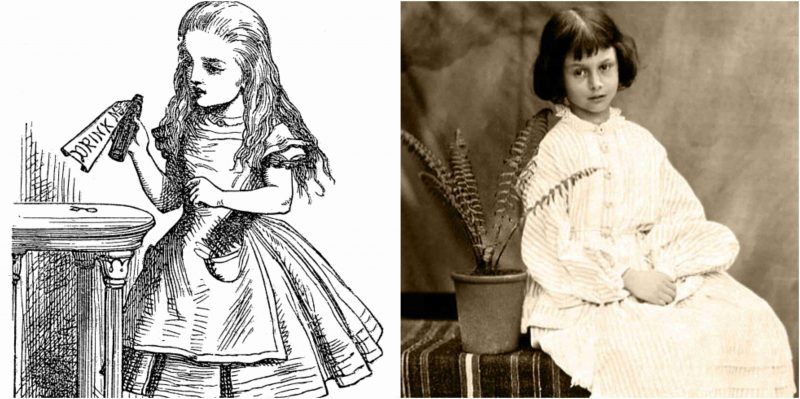Alice in Wonderland is among the most influential books ever written. Adored by both children and adults, it tells the story of a bored little girl named Alice and her journey to an imaginary parallel world, filled with very amusing human-like creatures. Being one of the most notable contributions to the genre known as “nonsense literature,” the book has made a huge impact on the movie industry, pop culture, and on literature itself.
Written in 1856, this phantasmagorical novel is the creation of Charles Lutwidge Dodgson.
Dodgson was an English mathematician, photographer, logician, deacon, and finally a writer. Born on January 27, 1832, in Daresbury, Cheshire, he was a gifted child, showing his intellect early on. Dodgson was reading books at the age of 7 and received his first education at home. Later, he studied at the Richmond Grammar School. He had lots of health problems in his youth, and the various diseases took their toll.
As a very young child, Dodgson suffered from an illness that left him deaf in one ear and with a weak and problematic chest for his entire life. Still, his mind was brilliant, and a part of his incredible imagination was, in fact, another one of his diseases. He reportedly suffered from a rare neurological disorder that twisted reality, caused hallucinations, and made him see things bigger or smaller than they were. Knowing this, it’s easy to assume his ability to imagine and write down the fascinating volume that is Alice in Wonderland.

Charles Lutwidge Dodgson wrote the novel under the pen name Lewis Carroll, and the entire world knows him by this name. Three years before the book was published, on July 4, 1862, Charles was on a boat trip on the Thames River, accompanied by Reverend Robinson Duckworth and three little girls by the names of Alice, Edith, and Lorina Liddell.

The writer, the three little sisters, and the Reverend were traveling from Oxford to Godstow for a picnic. As Mr. Duckworth was rowing the boat, the 10-year-old Alice asked Charles Dodgson to tell them a story. Dodgson began narrating, revealing the story of a little girl named Alice who fell down a rabbit hole and traveled into a fantasy world. The girls loved the story, and little Alice asked Charles to write the story down for her. As promised, a few months later, he became Lewis Carroll and did what was asked by Miss Liddell.

On November 26, 1864, Charles gave Alice Liddell a manuscript called Alice’s Adventures Under Ground, which contained the original illustrations done by him. A year later, in November 1865, the novel was officially published. The book was an instant success. Lewis Carroll soon became a well-known name around the world. Queen Victoria herself was such a big fan of the book that she ordered Charles to dedicate the next book to her.
The writer later presented his mathematical book called An Elementary Treatise on Determinants, With Their Application to Simultaneous Linear Equations and Algebraic Equations to the Queen, and it’s hard to believe that her Majesty was amused with this, as she had had something quite different in mind.

Carroll later wrote another book with the Alice character, named Through the Looking-Glass and What Alice Found There. The book was published in 1871. It was five years before that, in 1886, the original manuscript given to Alice Liddell was published, and in 1890 the writer published a shortened version of the book, with more illustrations, for children not older than five years.
Charles Dodgson died on January 14, 1898. He published at least 15 books before he died, but none of them reached the fame and popularity of Alice in Wonderland.
He was a friend of the Liddell family for a long time since the father of the three girls, Henry, was the dean of Christ Church in Oxford. Charles befriended the Liddells in 1855, first becoming friends with the eldest of the Liddell children, Harry. He often took the children on picnics, where he told them fantastic stories and used them as subjects for his hobby as a photographer. He spent time with all the children, but his favorite, however, was Alice Liddell.

The friendship suddenly ended in June 1863, for unknown reasons. Some biographers worryingly speculate that Charles had inappropriate and romantic feelings towards Alice and wanted to marry the 11-year-old. Others claim that Alice’s older sister Lorina was in love with Charles, so he ceased relations with the family. However, this topic will remain a mystery because the pages of Charles’ diary from this period are missing and his photos were burned.

Alice was the fourth child in the Liddell family. She was born on May 4, 1852. She had nine siblings and was regularly accompanied by her two sisters, Edith and Lorina. The three took a trip to Europe when Alice was a young woman.
Alice got married to Reginald Hargreaves, an English cricket player, when she was 28 years old. The wedding ceremony was held at Westminster Abbey on September 15, 1880. The couple had three sons: Alan, Leopold, and Caryl. The first two died as soldiers in World War I, but Caryl managed to survive the war and establish his own family. Reginald Hargreaves died in 1926, leaving Alice alone in their house. The maintenance cost for the property was too much for the widow, so Alice was forced to sell her copy of Alice’s Adventures Under Ground, a gift from Lewis Carroll himself.
The piece achieved a price of £15,400, four times more than predicted by Sotheby’s auction house. Later, the book was purchased by the American businessman Eldridge R. Johnson. It was displayed at Columbia University, and Alice was invited to the presentation where another interesting story happened. The 80-year-old Alice met Peter, who along with his brothers was the inspiration for another famous book: Peter Pan, written by J. M. Barrie.
Her book was finally purchased by a consortium of American bibliophiles and given back to the people of Britain as an award for their bravery in World War II. Today, the manuscript is located in the second largest library in the world, the British Library in London. Alice died on November 16, 1934, at the age of 82. Her remains rest in a graveyard in St. Michael and All Angels Church in Lyndhurst, Hampshire.

Another story of interest from Alice’s life is that supposedly the son of Queen Victoria, Prince Leopold, fell in love with her while he was spending time at Christ Church College in Oxford, where Alice lived.
Although these speculations are not proven, it is certain that Leopold gave the name “Alice” to his daughter, and acted as a godfather to Alice’s second son, Leopold, who was named after himself. Some say that the name of the third son Caryl is inspired by the name of Lewis Carroll, but Alice herself denied this rumor.

Even though the Alice in the book’s illustrations and Alice Liddell look different, it is quite certain that Charles Dodgson had Miss Liddell on his mind while creating his character.
Several movies were made from the book. Interestingly, it became forbidden in China in 1931, on the grounds that “animals should not use human language.”
Up to today, the book has sold more than 100 million copies.
